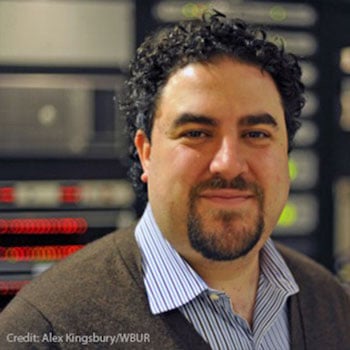Location
Climate & Space Research Building
2455 Hayward Street
Ann Arbor, MI 48109-2143
Phone
Primary Website
Additional Title(s)
- Graduate Advisor Program: Ph.D. in Space & Planetary Physics
Education
- 2003 PhD, Physics, Massachusetts Institute of Technology
- 1999 AB, Physics, University of Chicago
Research Interests
Heating, instabilities, and helium in the solar corona and solar wind. The impact of space weather on society and our ability to generate early warnings using monitors in deep space. Nature of the water moon Europa and its interaction with Jupiter.
- Principal Investigator, SWEAP Investigation, Solar Probe Plus
- Instrument Lead, Faraday Cup, Deep Space Climate Observatory
- Co-Investigator, FIELDS, Solar Probe Plus
- Instrument Lead, Solar Wind Experiment Faraday Cup, Wind spacecraft
- Project Scientist and Co-Investigator, Cosmic Ray Telescope for the Effects of Radiation, LRO
- PI of NASA and NSF grants to conduct investigations into the fundamental physics of solar corona and solar wind including heating, instabilities, composition, shocks, magnetic reconnection, radio emission
Biography
Justin designs sensors for spacecraft that explore extreme environments in space from the surface of the Sun to the outer edges of the solar system. He is interested in understanding the forces that lead to solar flares and the solar wind, a stream of particles heated to millions of degrees in the Sun’s atmosphere, or corona. In 2007, he used measurements by the Voyager spacecraft to detect the termination shock, a massive shockwave surrounding our solar system. He has served on advisory committees for NASA, the National Science Foundation, and the National Academy of Sciences. He currently leads the SWEAP Investigation, an international team of scientists and engineers building sensors that will collect samples of the Sun for the NASA Solar Probe Plus spacecraft, a mission of exploration that will make history in 2018 as the first human-made object to plunge into the solar corona.
Awards
- 2011 Popular Science Brilliant 10
- 2010 Presidential Early Career Award for Scientists and Engineers
- Innovative Spirit Award, 2010 Smithsonian Secretary’s Awards for Excellence
- NASA Group Achievement Award, Lunar Reconnaissance Orbiter (LRO) Exploration, 2011, The LRO Mission Operations Team, 2011, Lunar Reconnaissance Orbiter (LRO) Team, 2010
- Dean’s Educational and Student Advising Award, MIT School of Science, 2004
- NASA Group Achievement Award, Triana Project, 2002
Publications
Selected publications. Follow this link for an up to date list of all publications.
- Kasper, J. C., et al., 2013, A sensitive test for strong ion-cyclotron resonant heating in the solar wind, Phys. Rev. Lett., 110, 9, 091102, 10.1103/PhysRevLett.110.091102.
- Kasper, J. C., et al., 2012, Astrophys. J., 745, 2, 162, doi:10.1088/0004-637X/745/2/162, Evolution of the Relationships between Helium Abundance, Minor Ion Charge State, and Solar Wind Speed over the Solar Cycle (ADS).
- Kasper, J. C., Lazarus, A. J., and Gary, S. P. 2008, Physical Review Letters,doi:10.1103/PhysRevLett.101.261103, Hot Solar-Wind Helium: Direct Evidence for Local Heating by Alfvén-Cyclotron Dissipation (pdf, ADS)
- Kasper, J. C., Stevens, M. L., Lazarus, A. J., Steinberg, J. T., and Ogilvie, K. W., 2007, Astrophysical Journal, Solar Wind Helium Abundance as a Function of Speed and Heliographic Latitude: Variation through a Solar Cycle (pdf, ADS)
- Kasper, J. C., Lazarus, A. J., Steinberg, J. T., Ogilvie, K. W., and Szabo, A. 2006,Journal of Geophysical Research (Space Physics), Physics-based tests to identify the accuracy of solar wind ion measurements: A case study with the Wind Faraday Cups (pdf, ADS)
- Kasper, Justin C., Lazarus, Alan J., and Gary, S. Peter, 2002, Geophysical Research Letters, Wind/SWE observations of firehose constraint on solar wind proton temperature anisotropy (pdf, ADS)
